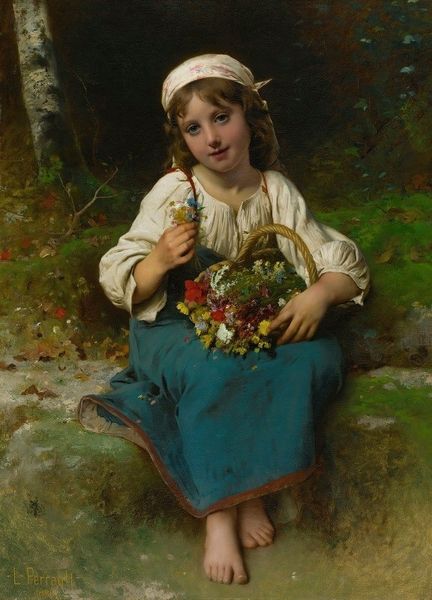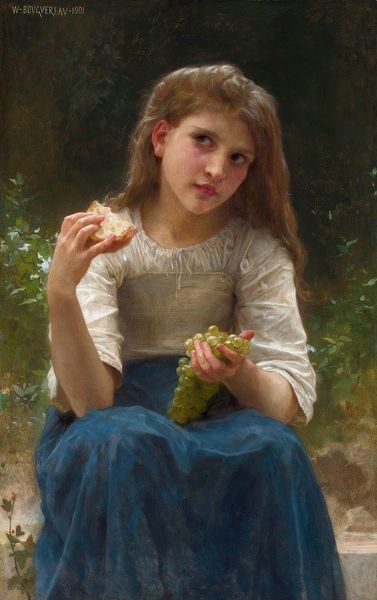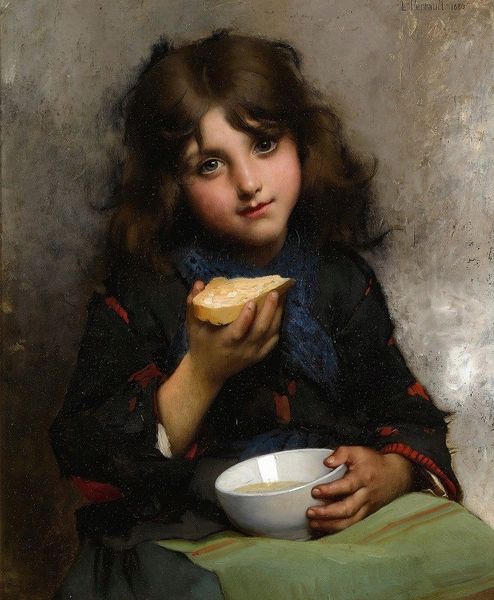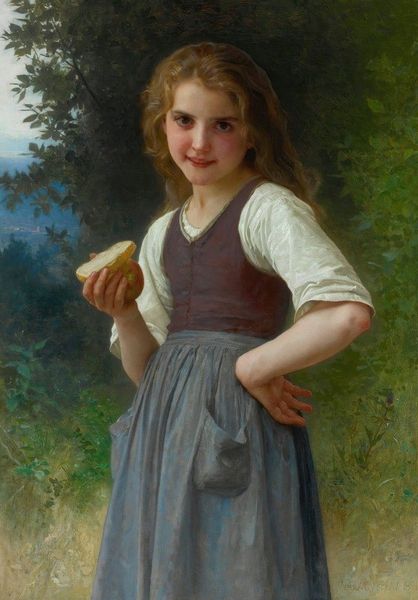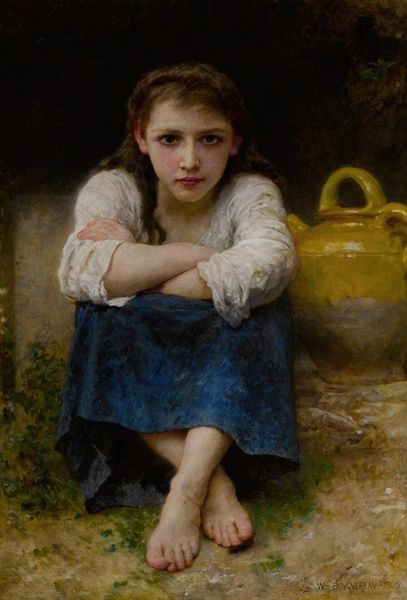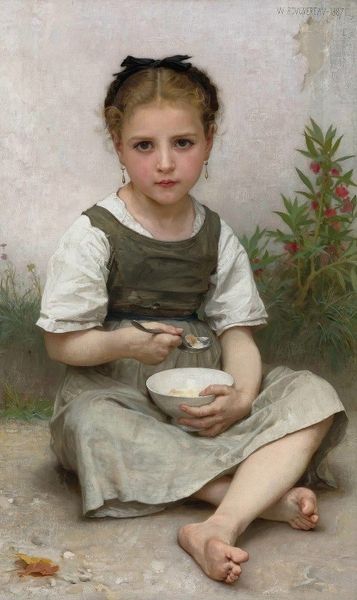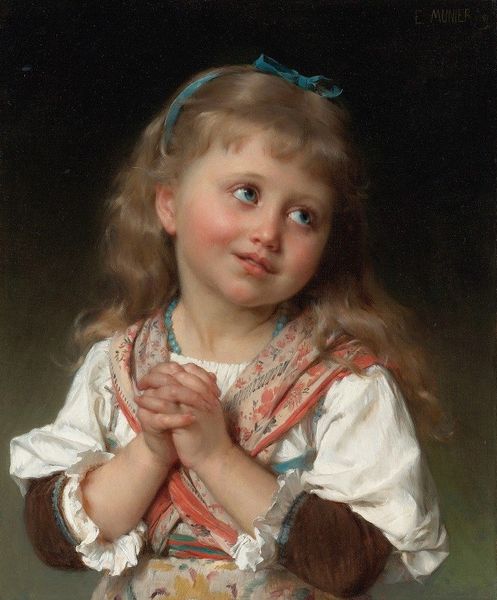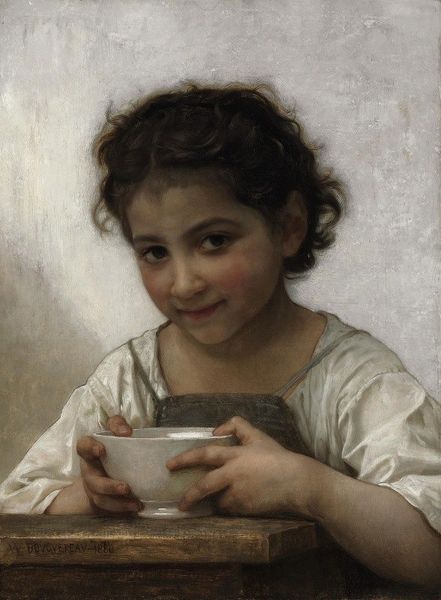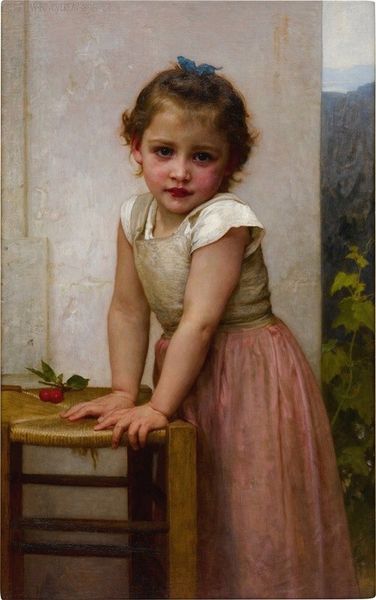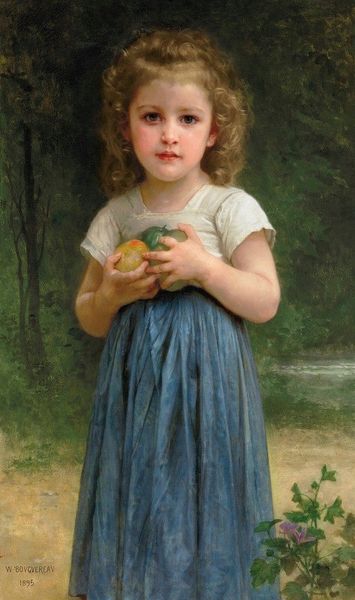
painting, plein-air, impasto
#
portrait
#
figurative
#
16_19th-century
#
painting
#
plein-air
#
figuration
#
impasto
#
genre-painting
#
academic-art
#
realism
Copyright: Public Domain: Artvee
Curator: Emile Munier's "Portrait of a Child", painted in 1880, immediately strikes one with its tender domestic realism. Editor: I'm struck by how the somber hues seem to weigh heavily, especially given its genre as a portrait of youth. The child's wistful gaze almost anticipates hardship. Curator: Indeed. But note Munier’s handling of impasto in the clothing – particularly the interplay between the red scarf and green skirt. It exemplifies academic art's technical proficiency of plein-air captured light. He invites us to consider not just who she is, but how the materials that surround her reflect the burgeoning industrial revolution's shift in the daily life of its people. Editor: While the materials tell one story, the artist’s compositional choices offer a counterpoint. Consider how Munier strategically places the discarded doll on the lower left to draw our eye downward, while the blossoming flora in the lower right create depth, reinforcing a symbolic duality. It creates a striking study in semiotics. Curator: Right, and further to that point, look at how such pieces like this gained popularity among the growing bourgeois. Art became a consumer good – these portrayals offered comfort amid radical shifts in economic models, presenting this idea of simplified labor. What are your thoughts on the piece now? Editor: I must say, revisiting the piece in terms of the artist's deliberate visual cues and considering social context lends greater depth, transforming it into something far more insightful. Curator: And for me, contextualizing its creation allows an examination of our history in materialist understanding.
Comments
No comments
Be the first to comment and join the conversation on the ultimate creative platform.
